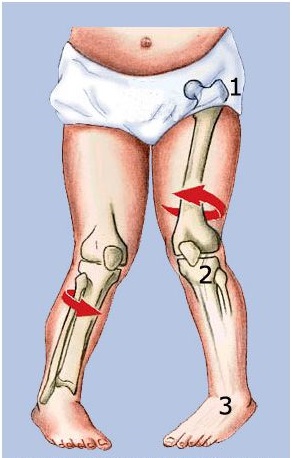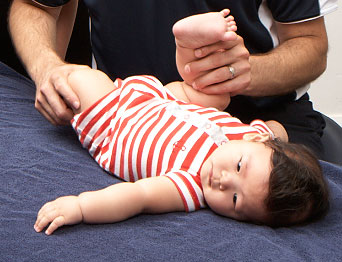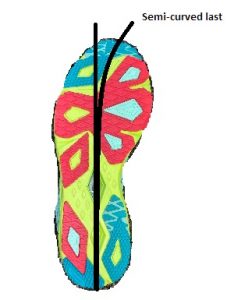Pigeon-Toed Gait In Kids: What Is It And How To Treat It?

In-toeing in children (also known as a pigeon-toed gait) is a condition where the toes are pointed inwards when walking. There are three conditions to which this arises and is most common in infants and children at very young ages. It can occur either at the femur (thigh bone), the tibia (shin bone), or metatarsals (middle of foot-toe bones). And in all three cases usually one of the three these segments are turning inwards.
There are three conditions to which this arises and is most common in infants and children at very young ages. It can occur either at the femur (thigh bone), the tibia (shin bone), or metatarsals (middle of foot-toe bones). And in all three cases usually one of the three these segments are turning inwards. Parents who notice this inward pointing of their kids’ toes should be concerned and should consult their family physician.
The comments surrounding this topic are about their kid growing out of it as they get older. But is this true? If it were, then why do we see young adolescents and teenagers with a pigeon-toed gait?
If the pigeon-toed gait was a very serious case, the family physician would have normally addressed it through specific means; from when they are born up until the age of 12 months.
If this is not a serious case, then what should a parent do about it? I for one would be hesitant about a statement of ‘they will grow out of it’ and look at a more proactive approach.
At these younger ages, the bones of a kid’s feet have not yet fully ossified and potentially there is the ability to make a change.
Keep in mind however that the age, weight, muscle development, and compliance of a kid will determine if any change is possible.
What Should You Consider For Your Child’s Pigeon-Toed Gait?
Pigeon-Toed Gait Plates:
A rigid device with the first ray cut out and 2-5 extension to toes acts as a shoe insert to retrain the muscles in feet and legs to turn outwards.

Physiotherapy:
A combination of stretching and strengthening may be beneficial to the musculature around the hips, and legs to improve imbalances.

Where should you start?
If you have concerns about your child’s pigeon-toed gait, we can help. Canadian Certified Pedorthists are trained and educated in the biomechanics of the lower limbs and work with footwear and foot orthoses. It is recommended to get a full assessment conducted by one and discuss your options.

Safina shafi
May 18, 2019 at 4:05 amMy son has intoeing gait. He developed this condition when he was 2 years old and has been seeing a specialist for boots and insoles. He is now 9 years old and I feel like it hasn’t corrected itself like the specialist has said.
Kintec Footwear + Orthotics
June 17, 2019 at 3:40 pmHi Safina, thank you for your question. Certified pedorthists are trained and educated in the biomechanics of the lower limbs and work with footwear and foot orthoses. It is recommended to get a full assessment conducted by one and discuss your options for your son. If you feel as though the current specialist that you are seeing isn’t doing the trick we would suggest finding someone new and going to visit a certified pedorthist.
Kavitha
May 1, 2021 at 8:31 amMy daughter is 4.5 yrs old. But her right leg looks and the way she walk like pigeon toes.could you please suggest what can help me make it straight leafs and to improve her walking habbit.
Michael Ryan - Director of R&D
May 3, 2021 at 2:59 pmHi Kavitha, It would be best if one of our pedorthists had a look at your daughter’s foot and leg alignment in order to suggest the best course of treatment. It is easy to book online here: booking page.